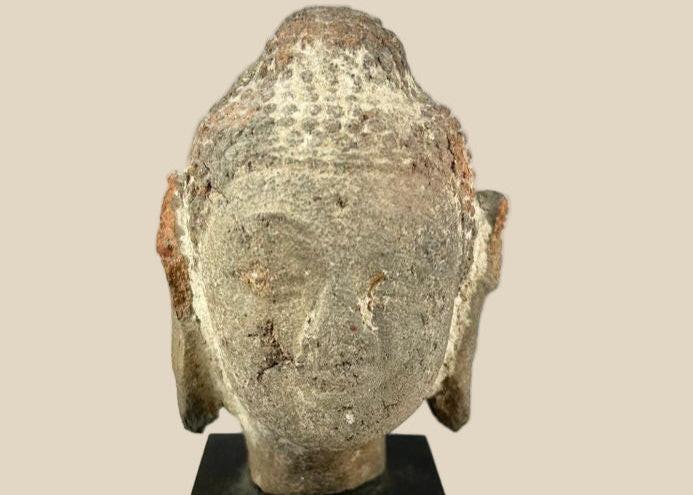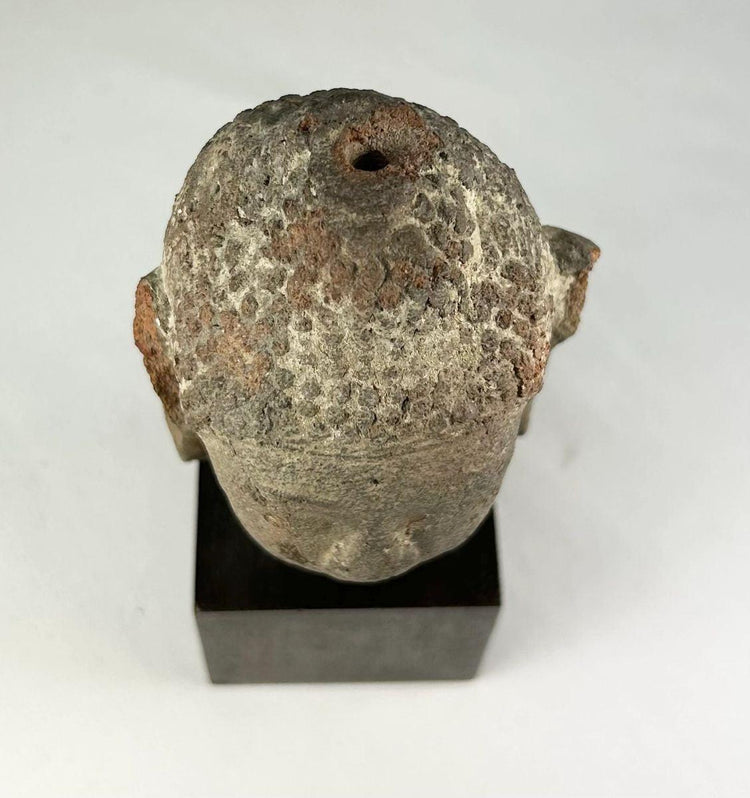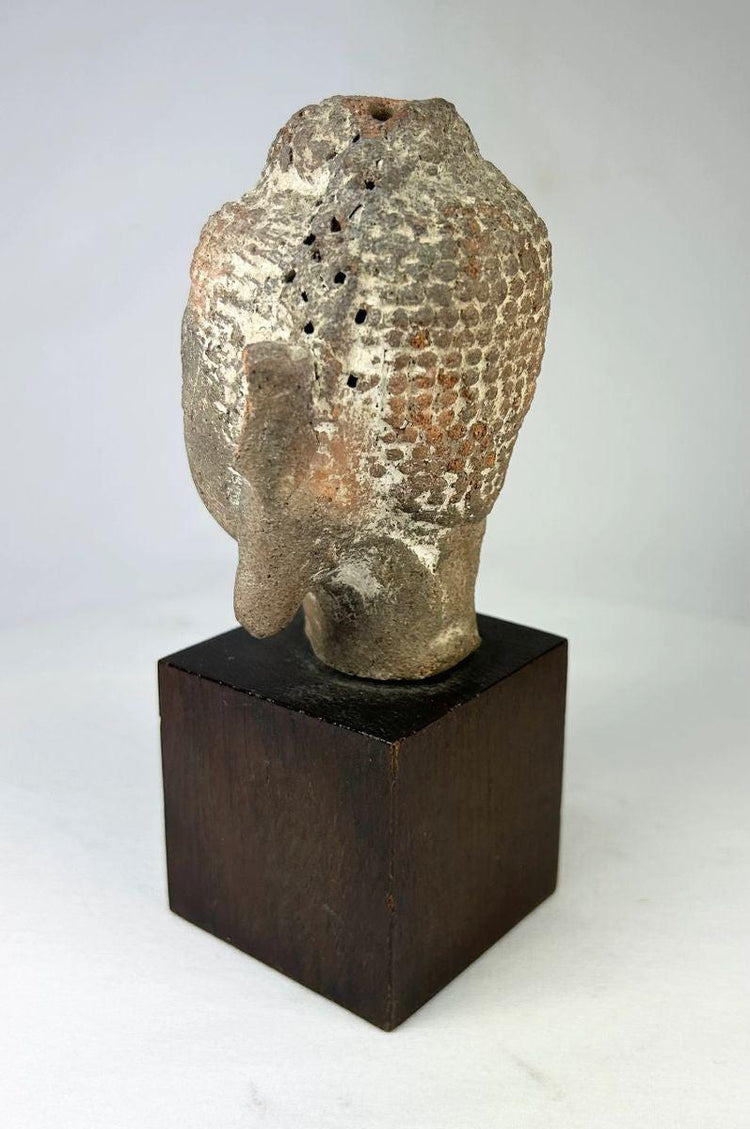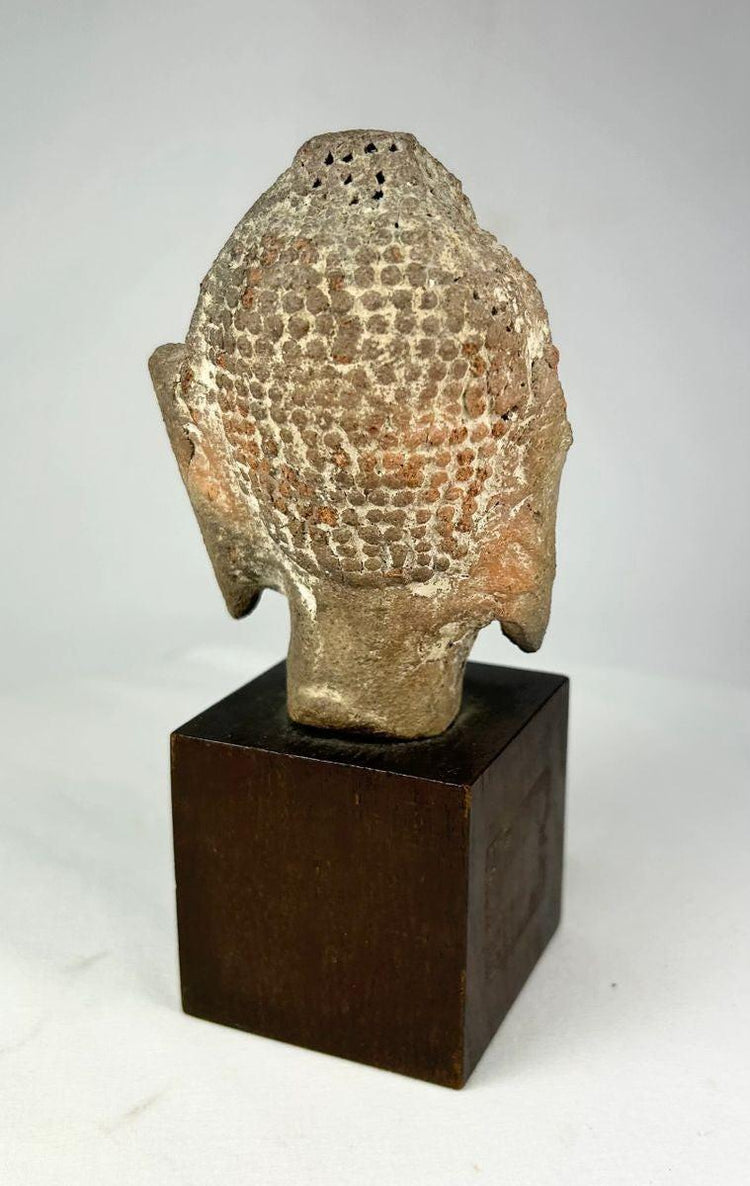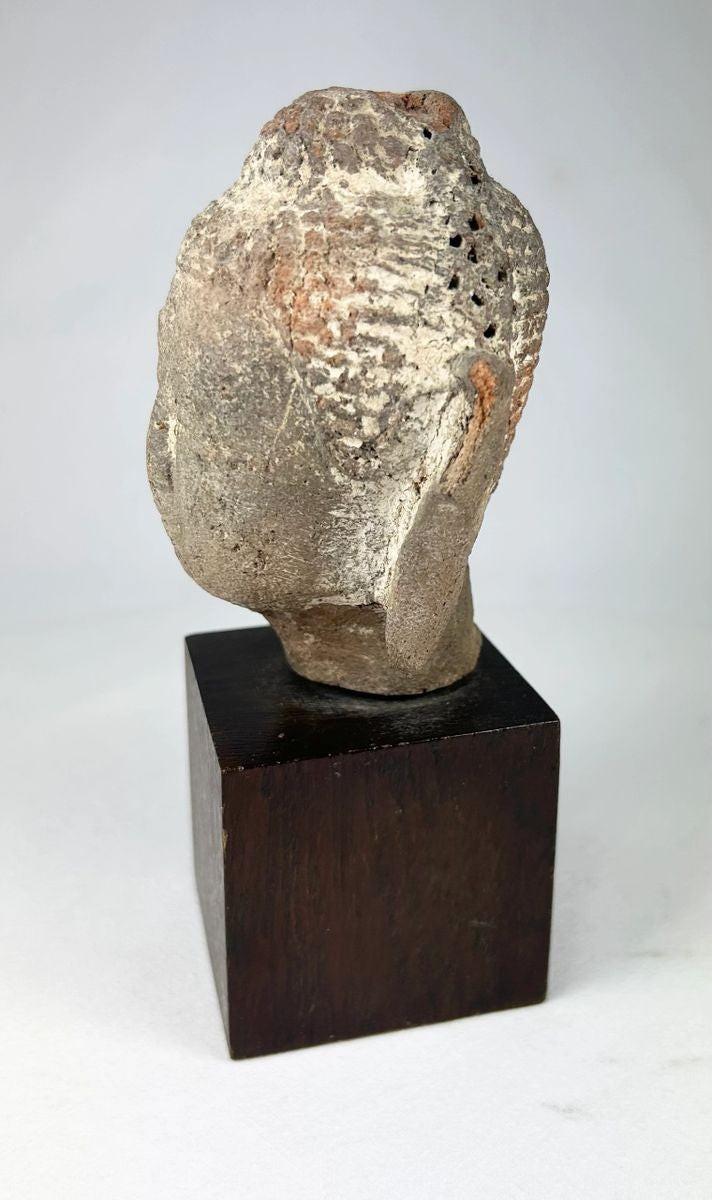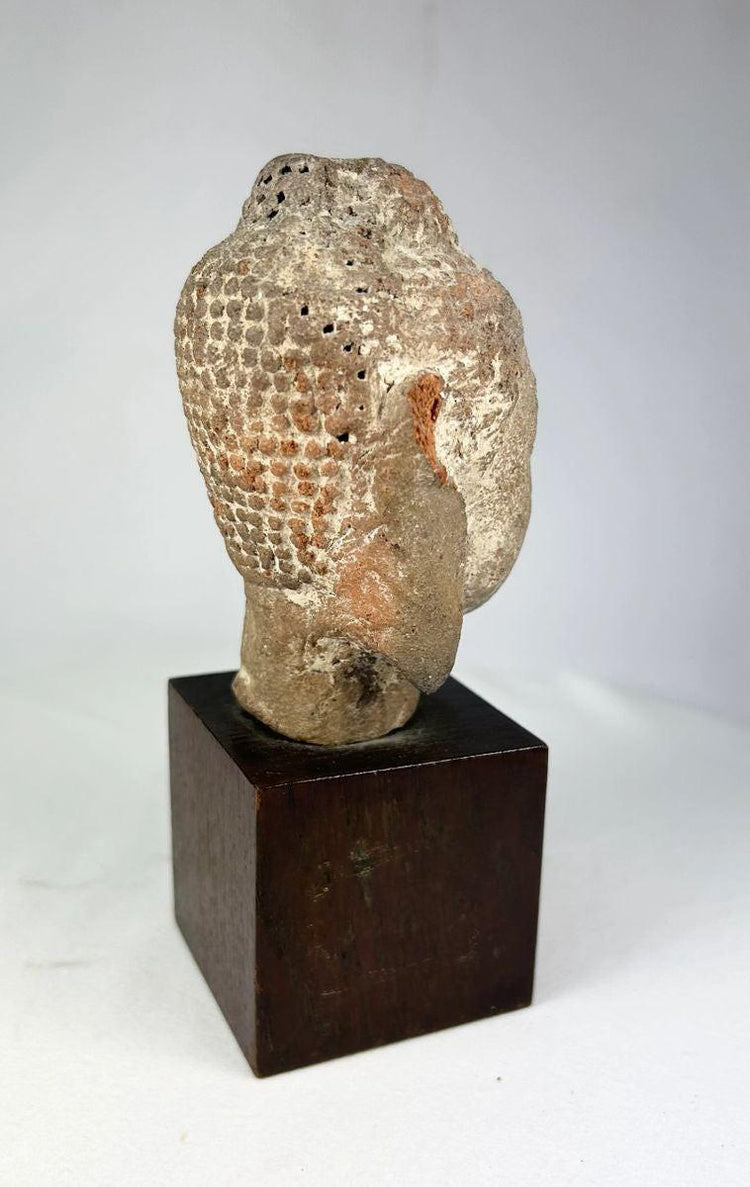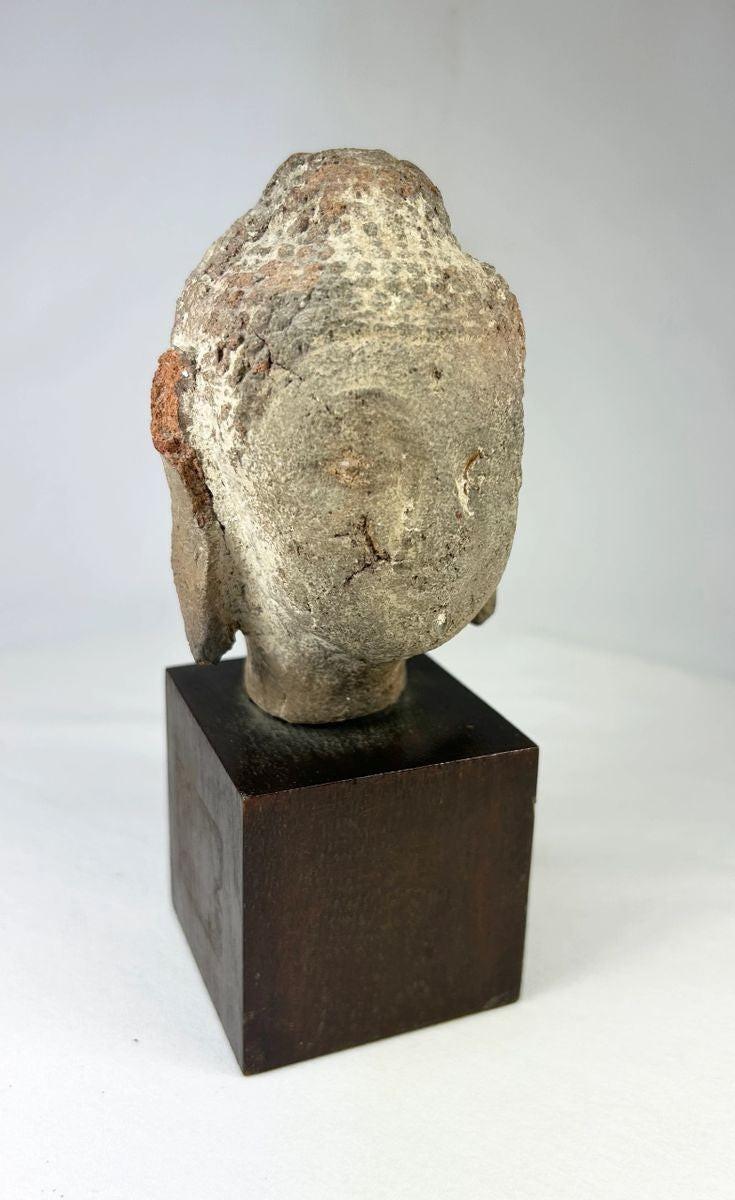Ancient | Terracotta Buddha Head | Southeast Asia | Circa 5th–10th Century CE
Description
More
Less
Historical Context & Origin
Region: Southeast Asia (likely Thailand or Cambodia)
Material: Terracotta clay
Period: 5th–10th Century CE
Description
This terracotta Buddha head is a striking example of early Southeast Asian Buddhist art, reflecting the influence of the Indian Gupta period on regional sculpture. The serene expression, soft facial contours, and meditative features encapsulate the spiritual ideals of tranquility, enlightenment, and contemplation. Crafted from terracotta, the head displays a pronounced ushnisha (cranial protuberance), a powerful symbol of wisdom and spiritual awakening. The intricate dot-like rendering of the hair and the calm, arched brows highlight both the technical skill of the artisan and the iconographic traditions that shaped Buddhist sculpture during this period.
Features
- Serene facial expression with softly arched brows and calm demeanor
- Pronounced ushnisha symbolizing enlightenment and wisdom
- Intricate dot-patterned hair, typical of early Buddhist art
- Crafted in terracotta with natural mineral deposits from age
- Early Southeast Asian style influenced by Indian Gupta artistry
Cultural Significance
Buddha images such as this were created as objects of devotion, embodying ideals of peace and spiritual insight central to Buddhist philosophy. This head reflects the artistic and cultural synthesis of Southeast Asia, where Gupta artistic traditions were adapted into local forms. Such pieces were venerated in temples and shrines, serving as powerful symbols of meditation, enlightenment, and divine presence.
Condition
The artifact exhibits natural weathering, mineral deposits, and edge wear consistent with centuries of burial or exposure. Small chips are present, yet the facial features remain well-defined and evocative. The surface patina enhances its authenticity and underscores its status as an ancient devotional object.
Dimensions (approximate)
Height: 6.5 in
Age
1,000–1,500 years old
Description
Historical Context & Origin
Region: Southeast Asia (likely Thailand or Cambodia)
Material: Terracotta clay
Period: 5th–10th Century CE
Description
This terracotta Buddha head is a striking example of early Southeast Asian Buddhist art, reflecting the influence of the Indian Gupta period on regional sculpture. The serene expression, soft facial contours, and meditative features encapsulate the spiritual ideals of tranquility, enlightenment, and contemplation. Crafted from terracotta, the head displays a pronounced ushnisha (cranial protuberance), a powerful symbol of wisdom and spiritual awakening. The intricate dot-like rendering of the hair and the calm, arched brows highlight both the technical skill of the artisan and the iconographic traditions that shaped Buddhist sculpture during this period.
Features
- Serene facial expression with softly arched brows and calm demeanor
- Pronounced ushnisha symbolizing enlightenment and wisdom
- Intricate dot-patterned hair, typical of early Buddhist art
- Crafted in terracotta with natural mineral deposits from age
- Early Southeast Asian style influenced by Indian Gupta artistry
Cultural Significance
Buddha images such as this were created as objects of devotion, embodying ideals of peace and spiritual insight central to Buddhist philosophy. This head reflects the artistic and cultural synthesis of Southeast Asia, where Gupta artistic traditions were adapted into local forms. Such pieces were venerated in temples and shrines, serving as powerful symbols of meditation, enlightenment, and divine presence.
Condition
The artifact exhibits natural weathering, mineral deposits, and edge wear consistent with centuries of burial or exposure. Small chips are present, yet the facial features remain well-defined and evocative. The surface patina enhances its authenticity and underscores its status as an ancient devotional object.
Dimensions (approximate)
Height: 6.5 in
Age
1,000–1,500 years old
You May Also Like




















